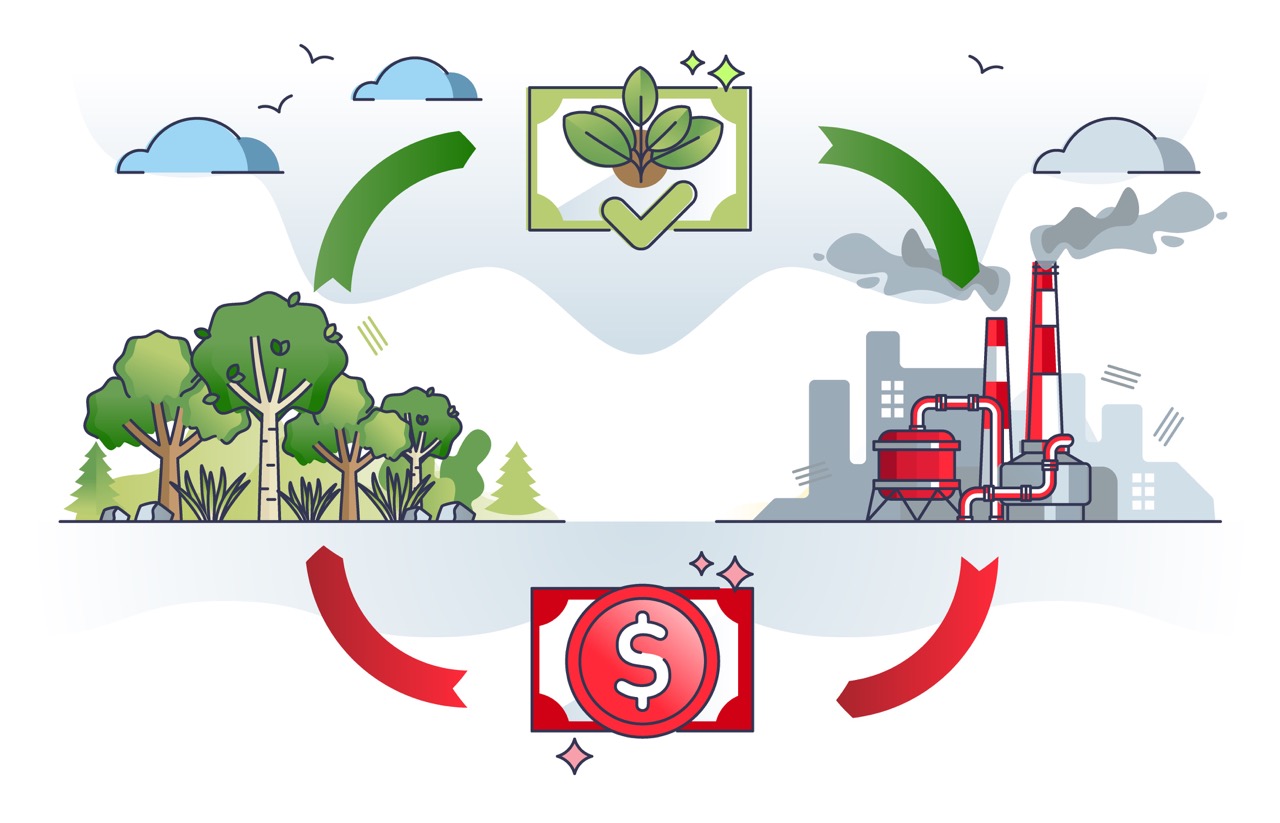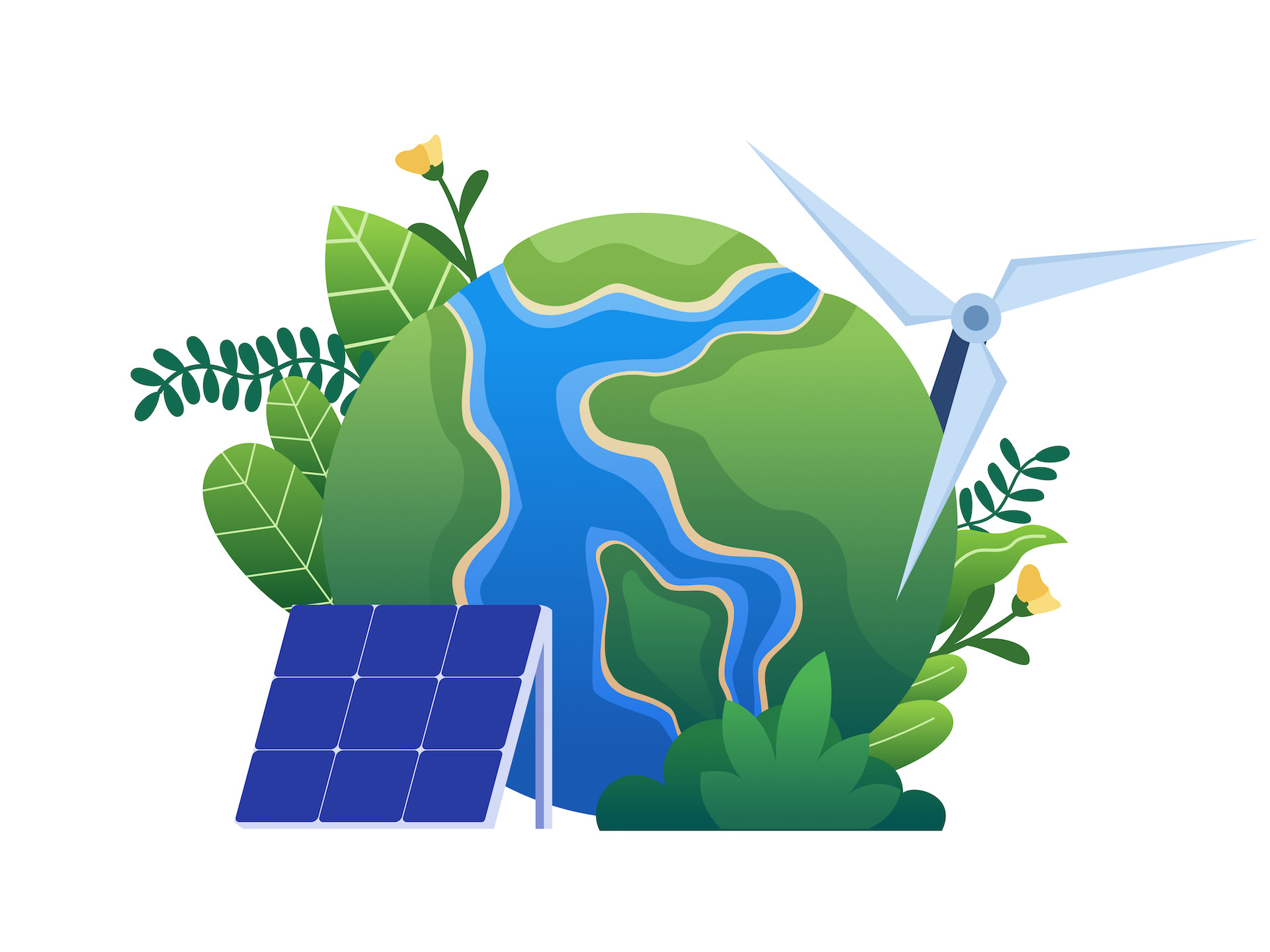Blockchain and Carbon Credits: How Can They Help Combat Climate Change?
Karolina Kondrak
8 min of reading
Climate change is one of the most pressing issues of our time, and one of the key drivers of this change is the high level of carbon dioxide (CO2) emissions in the atmosphere. Many individuals and organizations are taking steps to reduce their carbon footprint, but what about those emissions that cannot be avoided? This is where CO2 emissions offsetting comes in, and in recent years, blockchain technology has emerged as a potential solution to improve the transparency and effectiveness of this process.
In this post you will read what blockchain, offsetting and carbon credits are, and what makes blockchain technology so popular in the field of CO2 offsetting.
Burning issue of CO2 emissions
Several major tech companies have committed to becoming carbon-negative in the coming years by investing in carbon offsets or credits for funding renewable energy projects like wind farms.
European Union is sharpening the law in order to overcome the climat crisis challenges. In 2023 the EU Climate Law increased the EU’s 2030 emissions reductions target from 40% to at least 57%.
The European Green Deal was created with an aim of transforming the EU into a modern, resource-efficient and competitive economy, ensuring it is climate neutral by 2050. All member states will have nationally binding 2030 targets for removals and emissions in the gas removals from the land, land use change and forestry sector.
This trend has caught the attention of investors, with carbon sequestration being one of the most sought-after seed-stage funding categories. Crunchbase News identified carbon capture companies as one of the most popular categories for seed-stage funding at the beginning of the year, with Lithos Carbon raising $6.3 million in 2022 to assist farmers in reducing their greenhouse gas emissions.
What is blockchain?
Blockchain is a secure transactional database that is distributed and verified by a network of computers. It can be used to record transactions across many computers so that the record cannot be altered retroactively without the alteration of all subsequent blocks, giving it the characteristics of a ledger. A person (or group of people) known as Satoshi Nakamoto is considered to be the creator of the blockchain architecture concept, and the full manifesto, which describes how the bitcoin network, based on the chain of blocks, works can be read here.
A blockchain consists of two kinds of entities: blocks (which hold individual transactions) and chains (which hold multiple related blocks). A block is simply an encrypted piece of data which contains information about itself as well as some other pieces of data such as previous block hashes or transaction IDs. A chain is simply a linked list with each element containing its own hash value.
In other words, a blockchain is a distributed database that maintains a continuously growing list of data records. Each record or transaction in the list is cryptographically linked to the previous one and secured by a hash pointer (a link to the previous block).
What is CO2 emissions offsetting?
CO2 emissions offsetting refers to the practice of balancing out your carbon footprint by funding projects that reduce or remove CO2 emissions from the atmosphere. These projects can range from reforestation and forest conservation to renewable energy and energy efficiency initiatives. The idea behind offsetting is that by funding these projects, you can effectively neutralize the carbon emissions that you or your organization generates.
The process of offsetting typically involves purchasing carbon credits, which are certificates that represent the equivalent of one metric ton of CO2 emissions that have been reduced or removed from the atmosphere. These credits can then be used to offset your own emissions or sold to others who want to offset their own emissions.

What are carbon credits?
Carbon credits are a financial instrument that allows an individual to offset a certain amount of their carbon emissions. When you purchase carbon credits, you're paying for someone else's reduction in greenhouse gas emissions. In other words, if you buy carbon credits, it means that someone else has reduced their own emissions and you can claim those reductions as your own. The seller can use the money from your purchase to fund projects that reduce greenhouse gases elsewhere (like renewable energy or sustainable farming).
Carbon credits can be traded on an open market and can be bought and sold just like stocks or bonds – but they have no intrinsic value beyond their ability to mitigate climate change by reducing global warming-causing CO2 emissions. Carbon credits are not the only way to mitigate climate change or reduce your personal impact on the environment; however, they do provide an easy way for individuals who want to help make a difference in this area but don't have time or money for other options.
What can blockchain do for emissions offsetting?
One of the challenges with CO2 emissions offsetting is ensuring that the projects being funded are actually reducing or removing CO2 emissions as claimed. This is where blockchain technology comes in.
- According to a report “Building Block(chain)s for a Better Planet” by the World Economic Forum, blockchain can help to improve the traceability and credibility of carbon credits, which can increase trust in the offsetting process and encourage more investment in carbon reduction projects. It reads: “blockchain platforms could be harnessed to use cryptographic tokens with a tradable value to optimize existing market platforms for carbon (or other substances) and create new opportunities for carbon credit transactions.”
By using blockchain, it is possible to create a transparent and tamper-proof ledger of all transactions related to carbon credits. This makes it easier to track the creation, transfer, and retirement of carbon credits, and ensures that they are only sold and used once.
Another advantage of using blockchain for CO2 emissions offsetting is that it can enable greater participation and accountability in the process. By creating a decentralized and transparent platform for offsetting, blockchain can make it easier for individuals and organizations of all sizes to participate in the market. It can also provide a mechanism for verifying the authenticity and quality of carbon credits, which can help to increase public trust and confidence in the offsetting process.
There are already several blockchain-based platforms that are using this technology for CO2 emissions offsetting. For example, some platforms use smart contracts to automate the process of buying and selling carbon credits, while others use satellite imaging and machine learning to verify the carbon reduction or removal claims of specific projects.

Selected real-life projects that are using blockchain for CO2 emissions offsetting:
Poseidon developed a blockchain-based and AI-powered platform that is using blockchain to track the carbon footprint of products and services. They have partnered with several organizations, including the Liverpool City, to implement carbon credits in their operations. By using the Poseidon platform, organizations are able to offset their carbon footprint by funding verified carbon reduction projects around the world.
Climatecoin created a cryptocurrency that is designed to support climate mitigation efforts, including CO2 emissions offsetting. The platform allows individuals and organizations to purchase Climatecoins, which are then used to fund renewable energy and carbon reduction projects. The transactions on the Climatecoin platform are recorded on a public blockchain, which ensures transparency and accountability in the offsetting process.
EBL developed a transparent and effective platform utilizing IBM Blockchain technology, enabling high-emission companies to track their carbon footprints and meet regulatory requirements through the purchase of carbon credits from low-emitting entities.
ClimateTrade is a Spanish-based company that uses blockchain to track carbon credits and offsetting transactions. The company offers a platform where businesses and individuals can purchase and sell verified carbon credits.
Blockchain and carbon credits
Blockchain technology can be used to verify carbon emission credit transactions. The distributed ledger itself is a record of transactions that are stored on multiple computers. Each block in the chain contains information about its predecessor, as well as data about new transactions. This process creates an indelible record of each transaction and makes it impossible for anyone to alter the record without being discovered by other users of the system.
Blockchain has been proposed as a possible solution for verifying carbon emission credit transactions because it could allow buyers and sellers who don't know each other beforehand to transact securely without third-party intermediaries like banks or brokers involved in every exchange.
This would reduce the costs of doing business, as well as make it possible to create a carbon emissions trading market that is open and accessible to anyone.
- The Blockchain Innovation Landscape Brief, issued as a part of the “Innovation landscape for a renewable-powered future” project by the International Renewable Energy Agency (IRENA), highlights that blockchain can help to streamline the certification and transaction processes for renewable energy projects, which can reduce costs and increase transparency for buyers and sellers of renewable energy certificates.

Final thoughts
The fight against climate change requires innovative solutions that can address the complex challenges of reducing greenhouse gas emissions. CO2 emissions offsetting is one potential solution that has gained traction in recent years, and blockchain technology is emerging as a powerful tool for improving the transparency and effectiveness of offsetting efforts. By enabling greater traceability, reducing transaction costs, and increasing transparency, blockchain can help to accelerate progress towards a more sustainable future.
Blockchain technology has the power to make this market more efficient, transparent and democratic than ever before. By using blockchain technology, we can create a platform where people can trade carbon credits easily without any intermediaries and agents involved in transactions. This will not only help lower the costs but also increase security for all parties involved in trading carbon credits.


